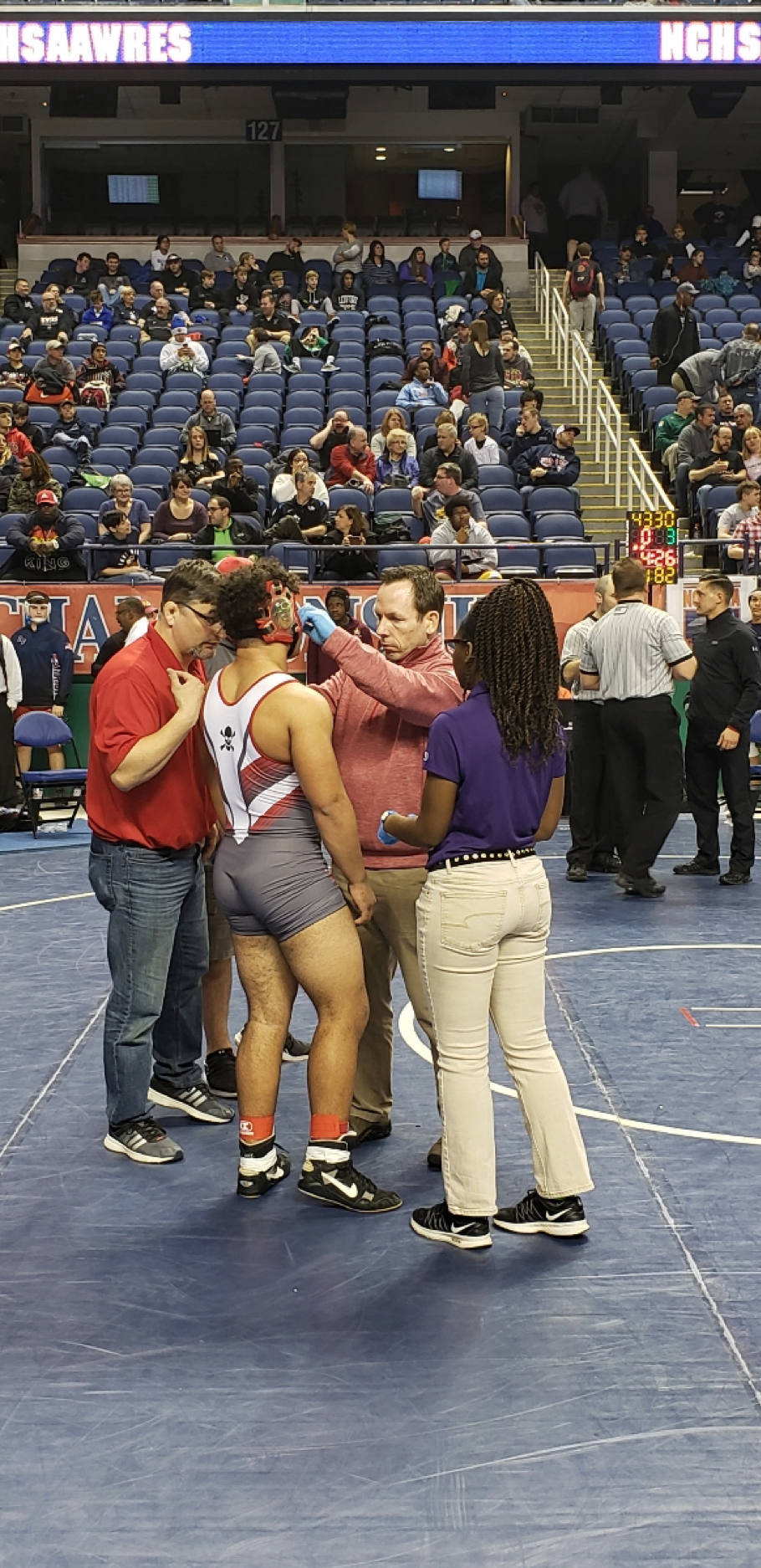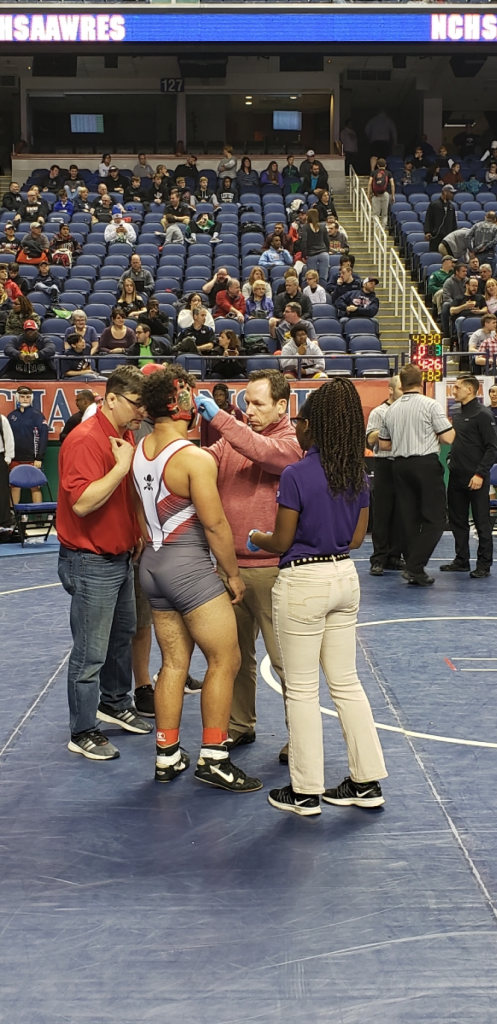 The NCHSAA is excited to recognize the role of Licensed Athletic Trainers (LATs) in high school athletics during National Athletic Training Month. This article is one of three in a group of interviews with LATs about their role and their reason for participating in athletic training in conjunction with the NFHS's #MyReasonWhy campaign. This interview is with Western Harnett High School Athletic Trainer John O'Keefe.
The NCHSAA is excited to recognize the role of Licensed Athletic Trainers (LATs) in high school athletics during National Athletic Training Month. This article is one of three in a group of interviews with LATs about their role and their reason for participating in athletic training in conjunction with the NFHS's #MyReasonWhy campaign. This interview is with Western Harnett High School Athletic Trainer John O'Keefe.
To find other interviews from the series, click here.
Why did you choose to be an athletic trainer at a secondary school?
I spent 20 years in the military, and after about 16 years in I knew that I wanted to do something other than the military. I decided to be an athletic trainer because it gave me the opportunity to be involved in sports. I was unsure what job opportunities there were as an athletic trainer. During my time in college I had the opportunity to do an internship at a local high school. It was there where I saw the impact an athletic trainer had on each athlete at the secondary school.
What personal and professional fulfillment do you receive from being an athletic trainer at a secondary school?
I really enjoy working with the sports medicine program students who may be unsure which medical career they want to pursue after high school. To be able to educate them on what the role of an athletic trainer’s does at each level. I also have the opportunity to know each student and athlete on an individual level through education on how and why we may have an athlete perform certain exercise, also to be able to work with the athlete’s and learn more about them personal and what their goals are while at the secondary school and afterwards.
What advice do you have for someone considering a career as a secondary school athletic trainer?
They need to know that you may have a lot of responsibilities; working with multiple sports teams at one time and may be responsible for all the paperwork. You may be required to work long days if you are required to teach along with being an athletic trainer.
In what way(s) does having a LAT impact cost containment as medical services for your student-athletes are provided on your campus?
As an athletic trainer you will be onsite of the sporting events so you can do the initial examination and determine the appropriate care that needs to follow. This allows the parents from taking the unnecessary trip to the emergency department or urgent care which can be costly.
How are parents of the student-athletes benefited by having a LAT managing their child’s health care?
Having an athletic trainer present at each sporting event at the secondary school level prevents the parents from automatically taking their child directly to the emergency department which saves them time and money. It may require the parent to possible miss time at work or needing to rearrange their schedule at the last minute. Most athletic trainers have direct contact with orthopedic MD, which allows the parents to pick the best time that fits their schedule and their child. This saves on the student missing anytime at school and the parent being able to work around their schedule.
Are you compensated by the school system in which you work, the clinic through which you work or perhaps a hybrid of the two?
I work directly for the county as an athletic trainer, so I am paid as an athletic trainer.



